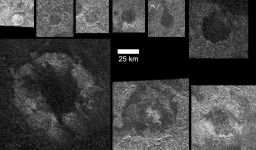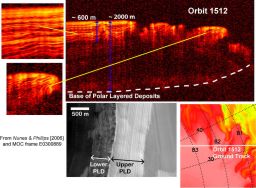Emily Lakdawalla • Aug 13, 2007
Ices, Oceans, and Fire: Monday afternoon: Terrestrial analogs-ish
I felt a bit overwhelmed after the morning's theory-laden sessions, so it was a relief to meet Anahita and her grandma (along for the trip -- who wouldn't want to visit Boulder in August?) and go have some lunch in the patio of a sandwich shop on Pearl Street. Nick Schneider, who is a professor at the University of Colorado and an author of one of the better introductory astronomy and planetary science textbooks out there, joined us. That link goes to Amazon, but I wouldn't advise buying it now; one of the things we conversed about over lunch was the fact that he was currently going over the proofs for the next (fourth) edition. But mostly we didn't talk business, we talked about kids and working lives and stuff. It's an unfortunate coincidence of timing that most academics produce children around the same time that they are either writing dissertations or attempting to win tenure, and having both young children and young academic careers at the same time is a pretty heavy burden. It's a burden that weighs especially heavily on women academics, especially in non-medical sciences, because women academics are more likely to be married to male academics in the same position than male academics are to be married to women academics. This is one of many, many reasons I chose not to stay in academia after finishing a Master's degree.

NASA / JPL
Quasi-circular features in the Titan-13 RADAR swath
The T13 RADAR swath crossing central Xanadu contains many "quasi-circular" features. Some of these may be impact craters; or some of them could be volcanic structures; or they could simply be accidental patterns formed by other geologic processes.
NASA / JPL-Caltech / ASI / University of Rome / Washington Universtiy in St. Louis
SHARAD view of Mars' north pole
The upper right panel contains a radargram from the Shallow Subsurface Radar (SHARAD) on Mars Reconniassance Orbiter. SHARAD has detected detailed structure in Mars' north polar layered deposits (PLD). The radargram represents the strength with which SHARAD's broadcast radio waves were reflected back at the orbiter; the vertical scale on the radargram is the time delay between the broadcast and the received echo.Next, Damhnait Gleeson presented her work on "Biochemical and Spectral Characterization of a Sulfur-rich Glacial Ecosystem and Potential Analog to Europa." This is a progress report on the work that The Planetary Society supported her in doing at Borup Fiord Pass last summer, and I encourage you all to, if you haven't already, read the blogs from that trip, and look at their amazing pictures.
Then Charles Hays presented on some cool lab equipment for studying "Cryogenic Property Measurements on Icy Compositions with Application to Solar System Ices." This was mostly a progress report, stating that his equipment is ready for studying how various materials that are likely to exist in the outer solar system (like porous ices or methane clathrates) behave at outer-solar-system-like temperatures under icy-moon-like stresses. He invited everybody in the room to suggest materials and conditions for experiments that would provide better-constrained numbers to plug in to all those geophysical models I talked about from the morning sessions. I also wrote down that one of his pieces of lab equipment has the Star Trek-sounding name "cryo-viscometer."
That's about all I can handle writing for tonight. More to come tomorrow!
The Time is Now.
As a Planetary Defender, you’re part of our mission to decrease the risk of Earth being hit by an asteroid or comet.
Donate Today

 Explore Worlds
Explore Worlds Find Life
Find Life Defend Earth
Defend Earth

